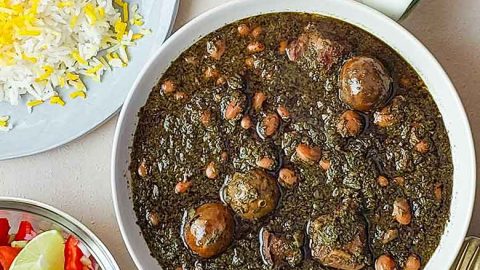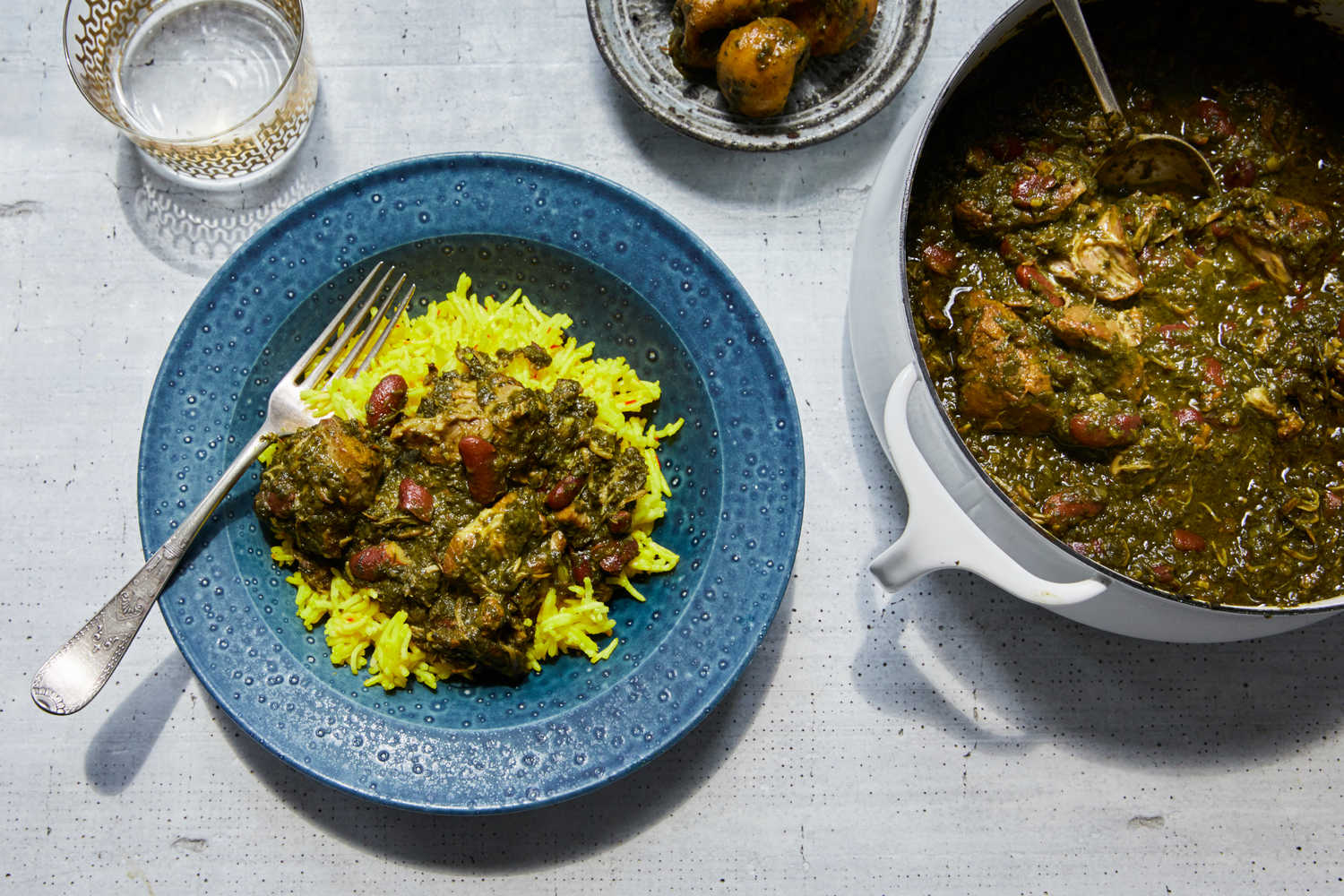Ghormeh Sabzi, a beloved Persian dish, holds a special place in the hearts and palates of Iranians and lovers of Persian cuisine worldwide. This aromatic and flavorful stew, bursting with herbs, tender meat, and tangy dried limes, reflects the rich culinary heritage of Iran and the ingenuity of Persian cooks. In this article, we embark on a culinary journey to explore the origins, ingredients, preparation, and cultural significance of Sabzi.

Ghormeh Sabzi
Origins and Cultural Significance:
Ghormeh Sabzi traces its origins to ancient Persia, where it has been enjoyed for centuries as a traditional dish. The name Ghormeh Sabzi translates to “fried herbs” in Persian, reflecting the dish’s key ingredients of sautéed herbs and greens. This flavorful stew is a staple of Iranian cuisine and is often served during special occasions, celebrations, and gatherings with family and friends.
Ingredients and Preparation:
The hallmark of Ghormeh Sabzi is its rich and complex blend of herbs, which forms the backbone of the dish’s flavor profile. The main ingredients typically include parsley, cilantro, fenugreek leaves (shanbalileh), and green onions, which are finely chopped and sautéed until fragrant and tender.
In addition to the herbs, Sabzi features tender chunks of meat, traditionally lamb or beef, which are browned and simmered in the herb mixture until tender. Dried limes (limoo amani) add a tangy and slightly sour flavor to the stew, while red kidney beans provide texture and substance.
The stew is seasoned with spices such as turmeric, cinnamon, and black pepper, which enhance the depth and complexity of the flavors. Ghormeh Sabzi is typically cooked slowly over low heat, allowing the ingredients to meld together and develop rich, savory flavors.
Culinary Experience and Enjoyment:
Savoring Ghormeh Sabzi is a sensory experience that delights the palate with its aromatic herbs, tender meat, and tangy-sour undertones. The dish is often served alongside fluffy basmati rice, which serves as the perfect accompaniment to soak up the flavorful sauce.
Each spoonful of Ghormeh offers a burst of vibrant flavors and textures, from the earthy herbs to the succulent meat and creamy beans. The tangy notes from the dried limes add brightness and depth to the stew, while the fragrant spices provide warmth and complexity.
Cultural Importance and Legacy:
Ghormeh Sabzi holds significant cultural importance in Iran, serving as a symbol of hospitality, tradition, and culinary excellence. It is often prepared with love and care by families across the country, passed down through generations as a cherished family recipe.

Ghormeh Sabzi
Beyond its culinary significance, Ghormeh embodies the spirit of Persian hospitality, welcoming guests with open arms and inviting them to partake in the country’s rich culinary heritage. Whether enjoyed at home with family or savored in a bustling restaurant, Ghormeh Sabzi offers a taste of Iran’s vibrant culture and warm hospitality.
Ghormeh Sabzi stands as a shining example of Persian culinary prowess, delighting food enthusiasts with its bold flavors, aromatic herbs, and rich cultural heritage. Whether enjoyed as a comforting home-cooked meal or savored in a bustling restaurant, Ghormeh offers a culinary experience that is as unforgettable as it is delicious.




